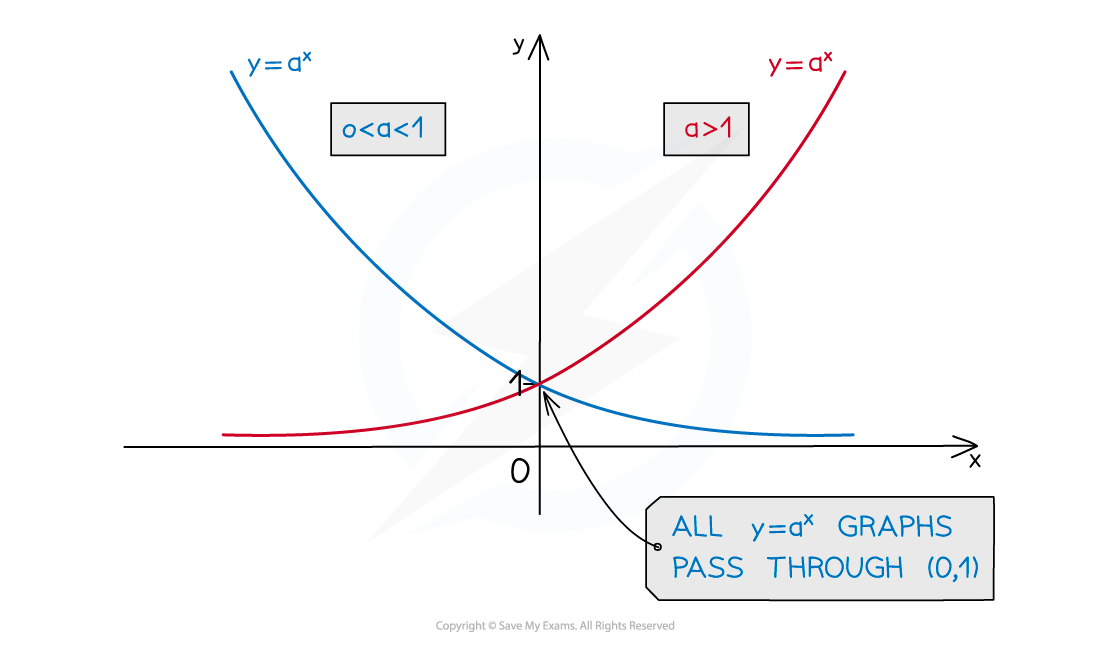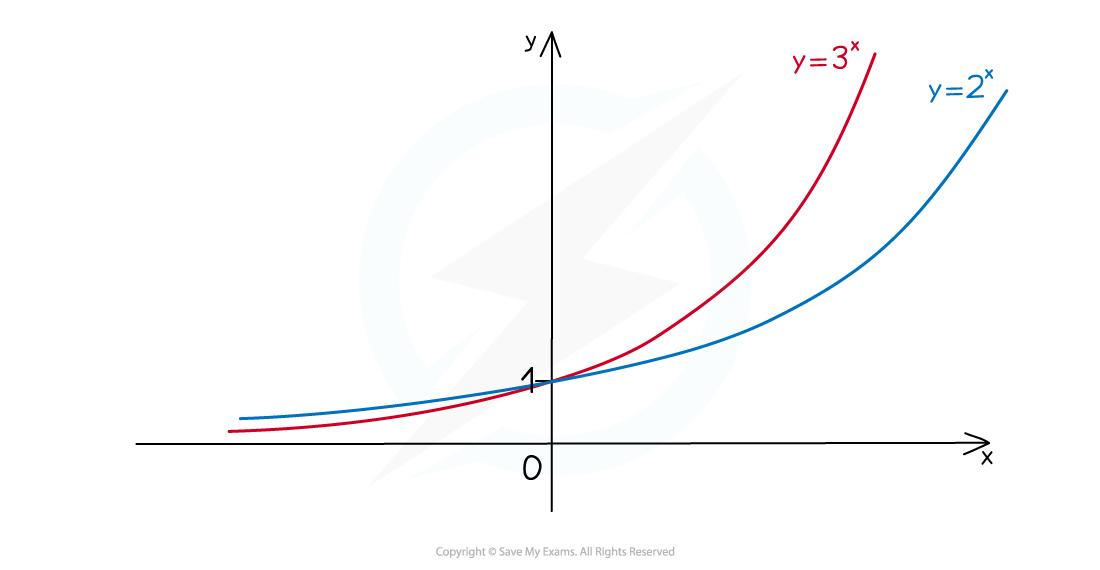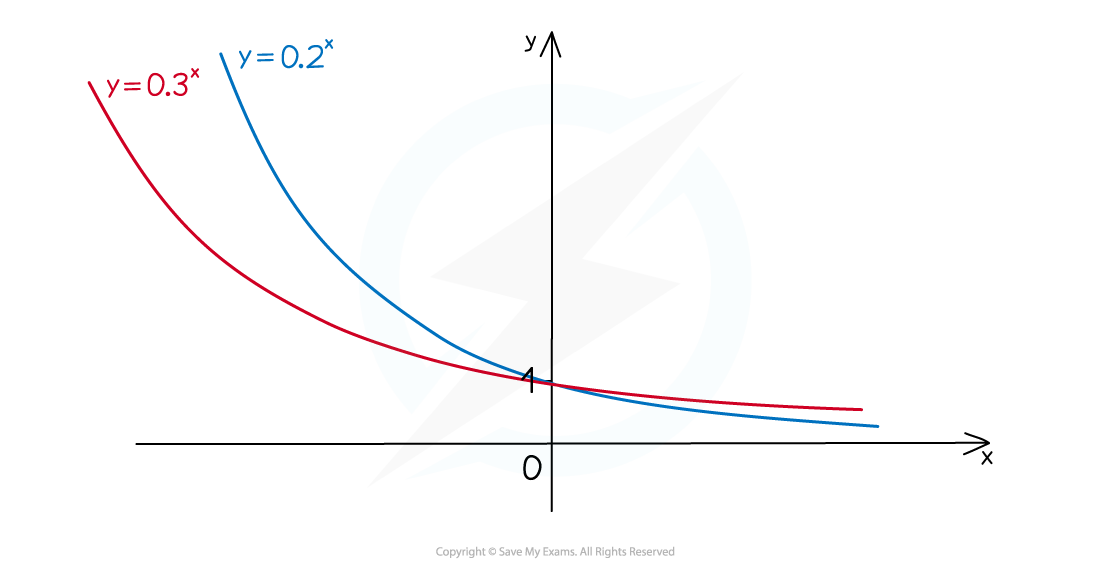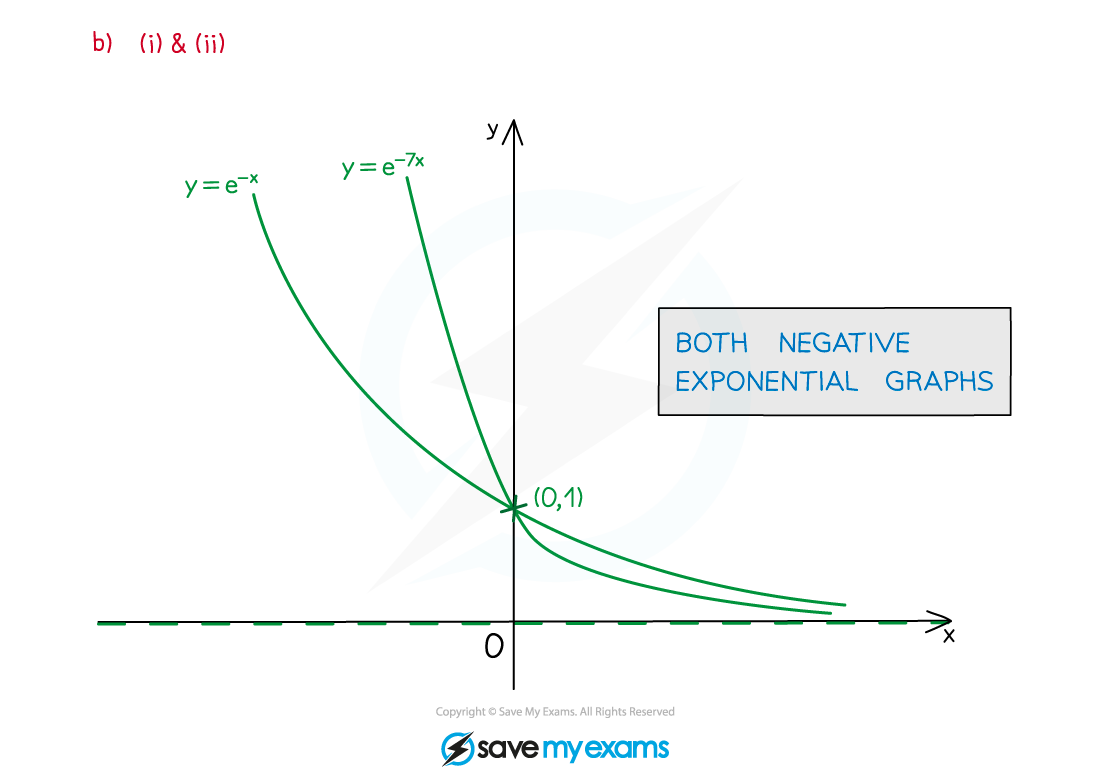Exponential Functions (Cambridge (CIE) O Level Additional Maths) : Revision Note
Did this video help you?
Exponential Functions
What is an exponential function?
An exponential functions in a function where the variable is the power
They are of the form y = ax with a > 0
What is an exponential graph?
All graphs of the form y = ax will pass through (0, 1) because a0 = 1
The x-axis is an asymptote

Exponential graphs when a > 1
Where x < 0 the higher value of a is the “lower” graph
Where x > 0 the higher value of a is the “higher” graph
a > 1 is exponential growth

What about when a ≤ 1?
You may like to think about why a = 1 is not considered... If a = 1, y = 1x = 1 for all values of x
0 < a < 1 represents exponential decay
Where x < 0 the higher value of a is the “higher” graph
Where x > 0 the higher value of a is the “lower” graph

Worked Example

Did this video help you?
"e"
What is e, the exponential function?
The exponential function is y = ex
e is an irrational number
e ≈ 2.718
As with other exponential graphs y = ex
passes through (0, 1)
has the x-axis as an asymptote

What is the big deal with e?
y = ex has the particular property
i.e. for every real number x, the gradient of y = ex is also equal to ex (see Differentiating e^x and lnx)


The negative exponential graph
y = e-x is a reflection in the y-axis of y = ex

What is exponential growth and decay?

y = Aekx (k > 0) is exponential growth
y = Ae-kx (k > 0) is exponential decay
A is the initial value
k is a (usually positive) constant
A negative sign is used in the equation making clear whether it is growth or decay
Worked Example



You've read 0 of your 5 free revision notes this week
Sign up now. It’s free!
Did this page help you?
